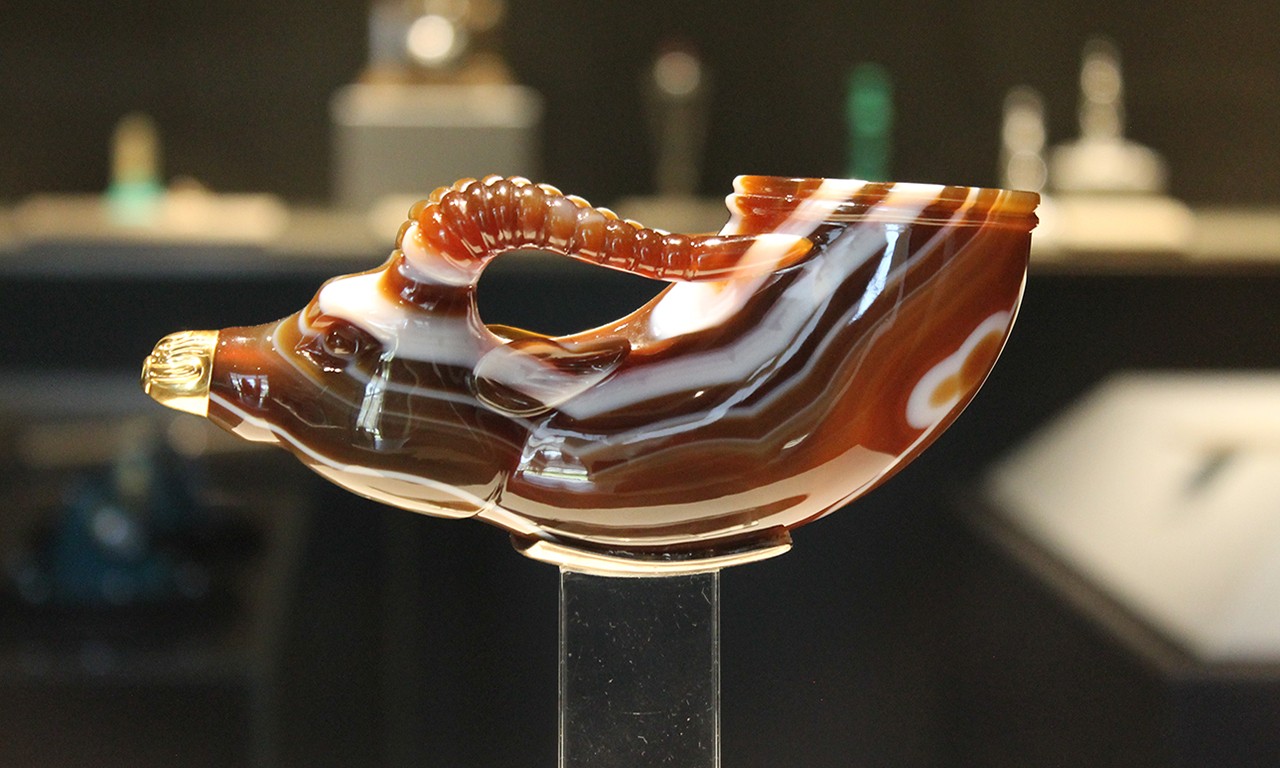 |
Agate Rhyton
Harold Van Pelt (American, 1925-)
Agate, gold and quartz
L.2016.21.21a,b
Loan courtesy of Harold and Erica Van Pelt |
Lapidarist Extraordinaire
Tomorrow marks the fifth anniversary of the reopening of Gemstone Carvings: The Masterworks of Harold Van Pelt, an ongoing display of sculptural and functional carvings made by the Californian expert lapidarist Harold Van Pelt. From chrysoprase candlesticks more sea green than the waters of the Caribbean to clear quartz containers with avian inclusions, the forty-four pieces in the gallery each highlight a different facet of Van Pelt’s carving prowess. Indeed, five years has offered ample opportunity to reflect and—perhaps better stated—refract on these gossamer and organic artworks. In this post we take a close look at Van Pelt’s story and some of the elements that make his work so special.
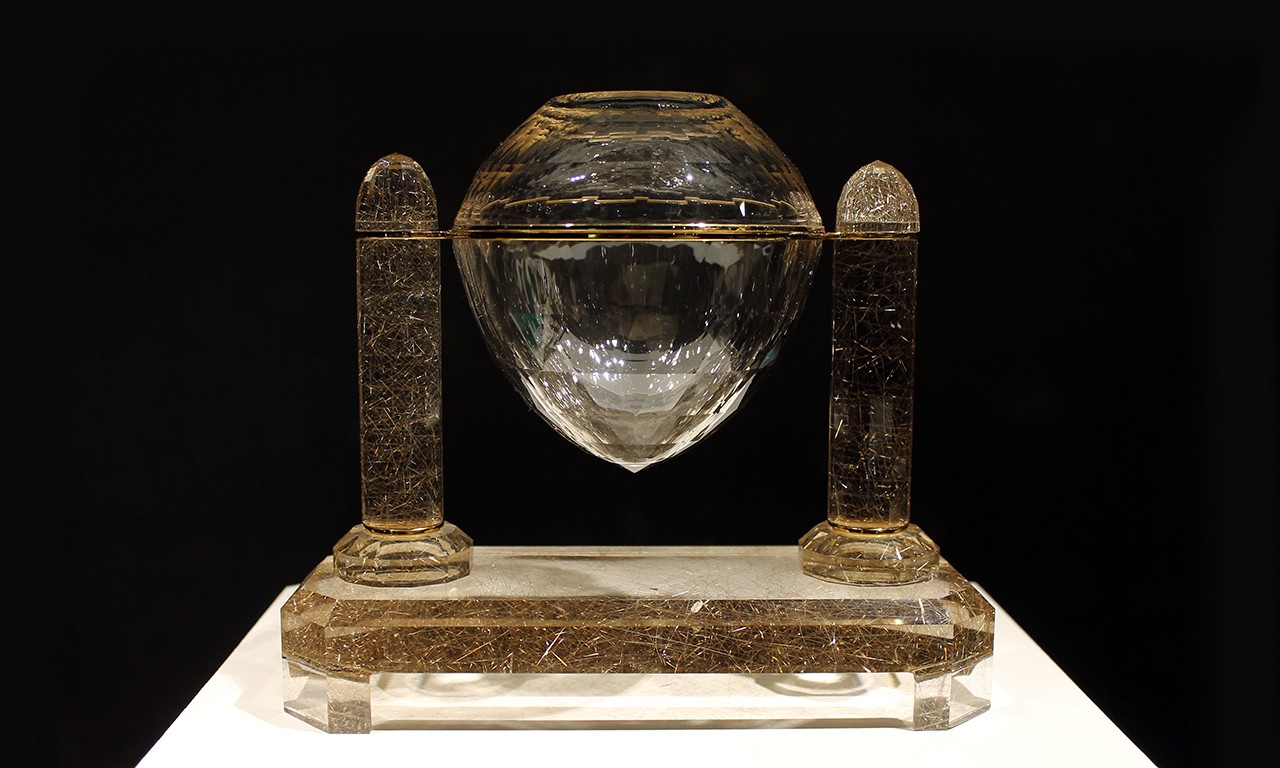 |
Balancing Act
Harold Van Pelt (American, 1925-)
Quartz, rutilated quartz and gold
L.2016.21.3a-e
Loan courtesy of Harold and Erica Van Pelt |
Taking the Rhineland Vacation Package
Stone carving dates back to the earliest beginnings of human civilization and has continually been refined throughout the ages. Approximately 5,000 years ago Chinese craftspeople made animal effigies and containers from jade. Before the common era, the Hellenistic Greeks became the first to excel at carving hardstones—a term best defined as “stones above a 6.0 on the Mohs hardness scale”—in projected relief, ultimately leading to the development of cameos sometime around 300 BCE. There were relatively few developments between ancient and medieval times in Europe, but the renaissance brought with it new approaches to carving hardstones. Some of the most important gem carving centers in the world, such as Idar-Oberstein in Germany’s Rhineland-Palatinate state, were established around this time when, coincidentally, mechanical tools were first being employed to work agate, quartz, and jasper. Lacking a long lapidary tradition, in the United States most gem carving tends to be associated with jewelry rather than the sculptural and functional works Van Pelt creates.
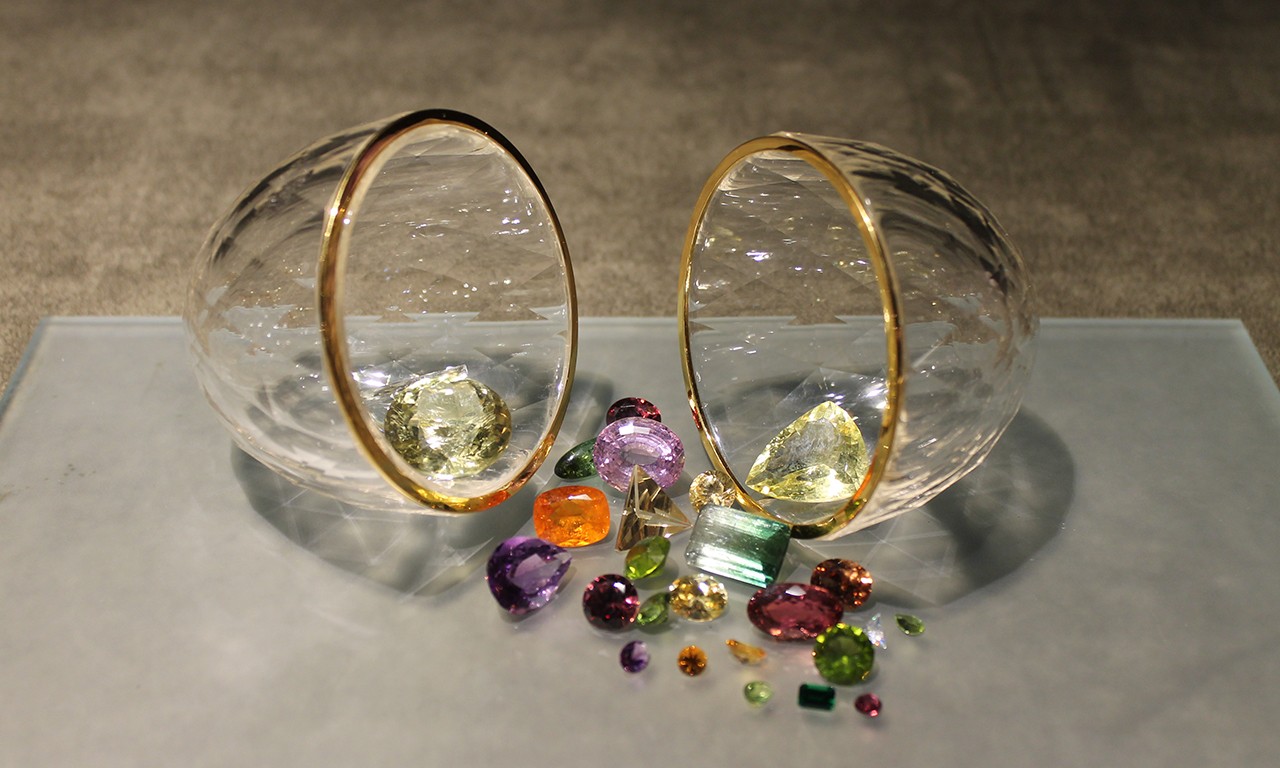 |
Faceted Quartz Egg
Harold Van Pelt (American, 1925-)
Quartz, gold and various gemstones
L.2016.21.35a-c
Loan courtesy of Harold and Erica Van Pelt |
Better Lathe than Ever
Harold Van Pelt’s status as an American gem carver is something of a rarity, with only a handful of others such as the late John Sinkankas falling into a similar category of lapidarist. Graduating from the Brooks Institute of Photography in Santa Barbara in 1953, Van Pelt and his partner in photography and life, Erica, made ends meet by photographing furniture. But Van Pelt’s true passion was always gemstones. Whenever possible he took jobs photographing gemstones and quickly the pair earned a reputation as two of the most premier gemstone photographers in the world. This reputation opened doors for the Van Pelts when they visited Idar-Oberstein in the 1960s, allowing them to get a firsthand look at their well-guarded techniques. While many of the of gemstones the Van Pelts had photographed around the world were unaffordable, quartz and agate remained relatively inexpensive. With an eye for avoiding pieces that were uncarvable due to imperfections, Harold Van Pelt began to purchase nodules and crystals at the Tucson, Arizona Gem and Mineral Show and in situ from mines in Brazil and Arkansas with the intention of carving them. He converted a 1925 metal lathe into a stone lathe and set to work creating his very first pieces.
Hummingbird Inclusion
Harold Van Pelt (American, 1925-)
Quartz, silver and chalcedony
L.2016.21.19a,b
Loan courtesy of Harold and Erica Van Pelt |
Bivalve Shell
Harold Van Pelt (American, 1925-)
Moss agate
L.2016.21.13.1
Loan courtesy of Harold and Erica Van Pelt |
Petrified Palm Wood Jar
Harold Van Pelt (American, 1925-)
Petrified wood
L.2016.21.18a-d
Loan courtesy of Harold and Erica Van Pelt |
Agate-Way Stone
The nature of Van Pelt’s work requires an intimate familiarity with the materials that he works with and their idiosyncratic characteristics. Inclusions are pieces of material caught in a larger body of a different material. In the context of lapidary, inclusions can be good or bad depending on whether they can be used to the benefit of the carver. One above example demonstrates how Van Pelt uses a naturally hummingbird-shaped inclusion suspended in quartz to create a one-of-a-kind container. Agate is a type of chalcedony, itself a microcrystalline variety of quartz, which forms in the cavities of volcanic rocks due to water and silica mixing with iron and manganese oxides and hardening over long periods of time. This can result in concentric bands running through the gemstone. Moss agate, not a true agate because it lacks its concentric bands, forms in a largely similar way. In the above bivalve shell jewelry case, Van Pelt uses the mottling of the stone to mimic the coloration of shell. A petrified palm wood vase employs the striations formed long ago by the living palm to create patterns that would otherwise be impossible with stone.
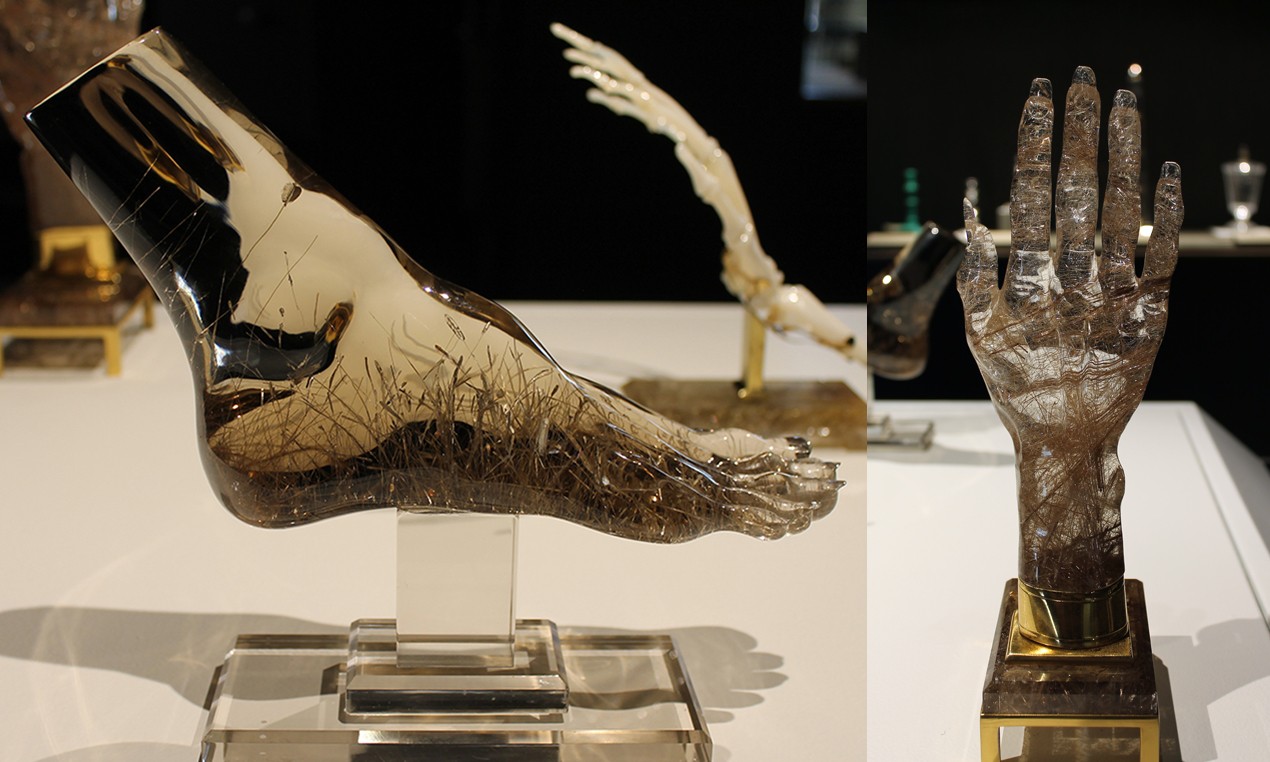 |
Rutile in Quartz Foot
Harold Van Pelt (American, 1925-)
Rutilated quartz and quartz
L.2016.21.40a,b
Loan courtesy of Harold and Erica Van Pelt |
Rutile Hand
Harold Van Pelt (American, 1925-)
Rutilated quartz and gold
L.2016.21.31a,b
Loan courtesy of Harold and Erica Van Pelt |
Doting Hand and Foot
Though Van Pelt’s carvings each demonstrate an incredible degree of skill, perhaps his most impressive works are those which are his most lifelike. Over the years he has created several sculptural replicas of his wife’s hands and feet. Each of these traces the lines of her extremities as if they were not meticulously carved from rutilated quartz, a stone harder than jade with needle-shaped titanium oxide inclusions. The piece of quartz used for the sculpture of Erica’s foot was selected so that the main concentration of golden rutile appeared to be spreading from the sole. Van Pelt is quoted as saying that he was inspired to create these by ancient Greek sculptures, but more than anything they seem to be love letters a woman who was a lifelong supporter and collaborator for Van Pelt.
Text and images may be under copyright. Please contact Collection Department for permission to use. References are available on request. Information subject to change upon further research.




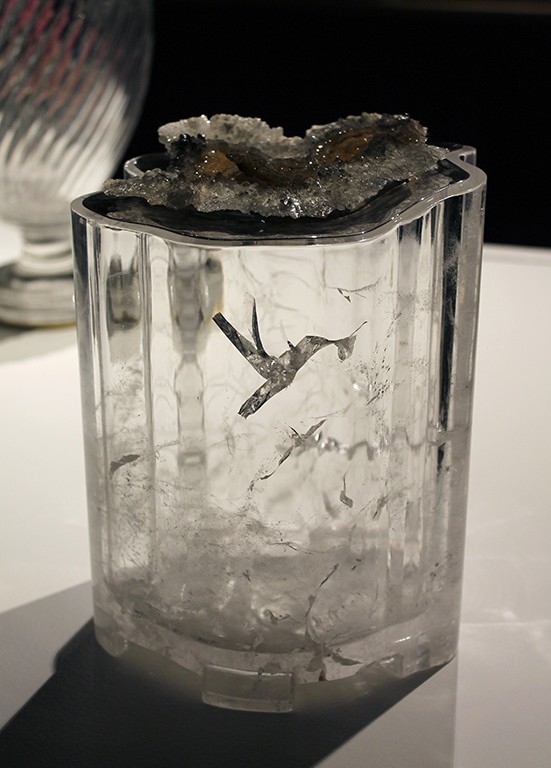
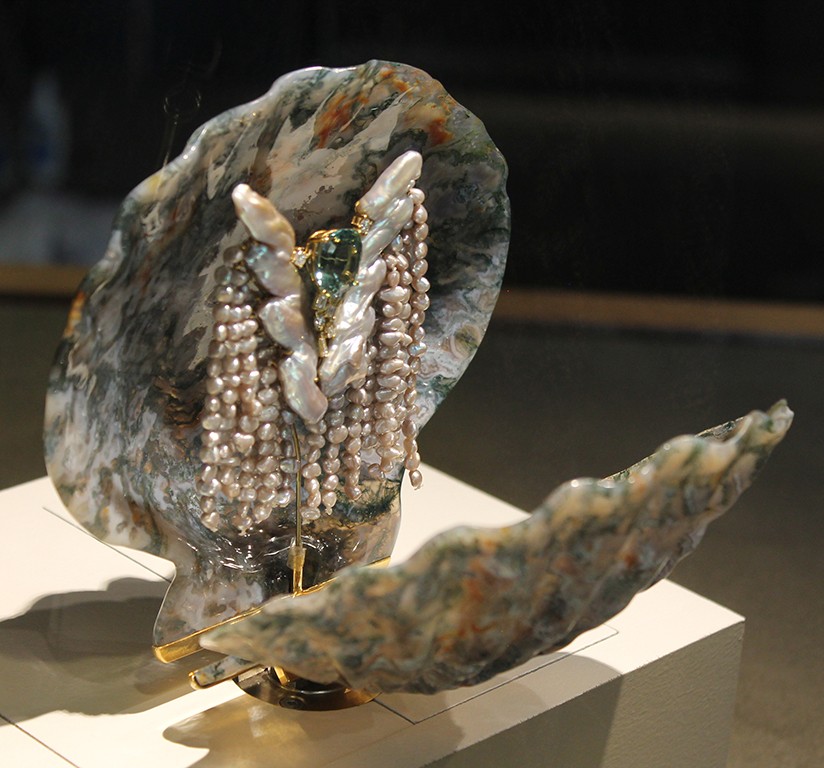
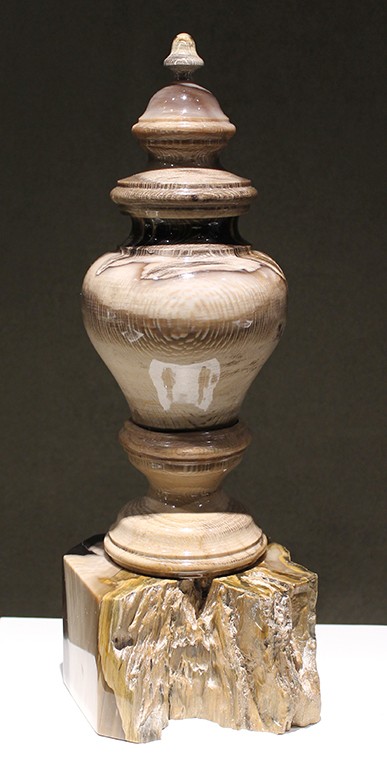

Comments